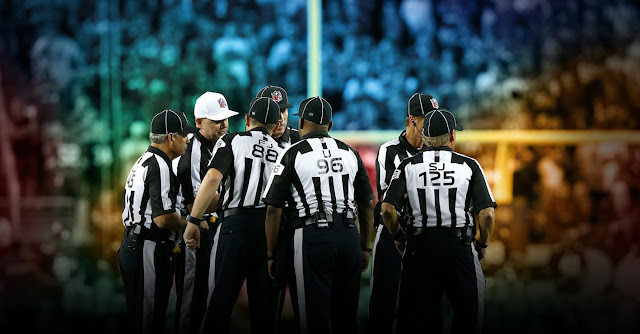Duties of Football Officers
Differences between football officials, referees and generals
Football officials enforce the rules of the game and as such are generally the people who draw the most from coaches, players and fans. 토토사이트 Without fans monitoring the progress of the football game, the game may not function with a set structure.
There are seven officials in football and each plays a very important role. Officials keep the game going by moving the game clock and playing the clock.
They also call for penalties when the rules are broken, breaking all legal records and making sure the athletes do not necessarily touch each other.
The referee is usually referred to as the referee in general, but in reality there is only one referee on the field during a match. Each officer has his own title and is assigned duties such as: Arbitrator, Coordinator, Chief Arbitrator, Judges, Judges, Judges, Judges and Side Judges. The arbitrator is the only officer wearing a white hat, all officers wearing black hats.
Arbitrator
The referee is the chief officer in charge of the game and is generally the final authority in all decisions.
It is the role of the referee to declare all the fines. The referee explains the penalty to the captain and coach of the team and says which player is responsible for the penalty. The referee was placed on the court about 10 meters behind the quarterback before the start of the game.
The referee tracks the illegal walk on the quarterback, looks for illegal blocks near the quarterback and determines if a yardage chain is needed on the field for a measurement.
Commander
The referee is the official officer who is about 5 meters away from the line of the ball on the defensive side of the ball.
The referee assists the referee in making decisions regarding the ball. The referee monitors the legality of play on the line of scrimmage with special emphasis on kidnappings and illegal limitations. The referee ensures that the offense has no more than 11 players on the field and checks the legitimacy of the player's equipment. The referee records all points, break time, records the winner, coins and wipes the ball dry between plays during cold weather.
Line Chief
The head line is an outside official who draws a line on the line of looking for exploits such as loss or harassment and penalties such as illegal movement, illegal movement, illegal use of hands and men down. Weak.
The fan line controls all away games played along the belt. The driver runs on the clock line and notices this chain to the pedal on the field as a reference point for field measurements. Also, the topic coordinator keeps all the right holders and marks the progress of the ball.
Judge line
The judge line is the officer standing on the side of the field from the leader line.
Line judges assist drivers in calling for illegal movements, illegal exchanges, sacrifices, or harassment. The line judge assists the referee with an illegal hand and holds the call and assists the referee on the wrong call.
The referee line ensures the quarterback does not cross the line of scrimmage before throwing the ball, watching for the offensive lineman line to the original downfield on punts, controlling game time and overseeing changes by the team on either side of the field.
Rear Judge
The rear judge was the officer who set the depth of 20 yards in the defensive zone on the left side of the field. One of the back judges' role is to make sure the defense has no more than 11 players on the field. The back judge sees you get all the rights on the wide receiver of the field.
The back judge is responsible for overseeing the area between the arbitrator and the investigating judge. The referee rules the legality and penalties for interference and has a final say regarding the legitimacy of the ball during the start of the match. During scoring, the reserve referee is placed under the goal and controls whether the goal is scored successfully.
Field Judge
The field judge is the official officer with a distance of 25 meters in the defensive line at the end of the field. The field judge is responsible for monitoring the game clock and calling for a game delay if the clock expires. Like the referee, the referee makes sure the defense has no more than 11 players on the field. The field judge manages the song that crosses the legal line of jurisdiction and the penalty for interference and inspects all eligible beneficiaries on the left side of the field. Also, if a play is out of bounds on the tight end of the field, the field judge marks the place.
Side Judge
This side judge is the official location, located at a depth of 20 yards in the protected area, near the left line as a line. The roles and responsibilities of internal judges are as important as those of the next judge. The referee makes sure that the defense does not have more than 11 players on the field and sees who is eligible from that side. The referee is responsible for overseeing the area between the referee and the investigating judge on the order, assisting in the call for legitimacy during the start of the match, and the law on legality and penalties for interference.



Comments
Post a Comment